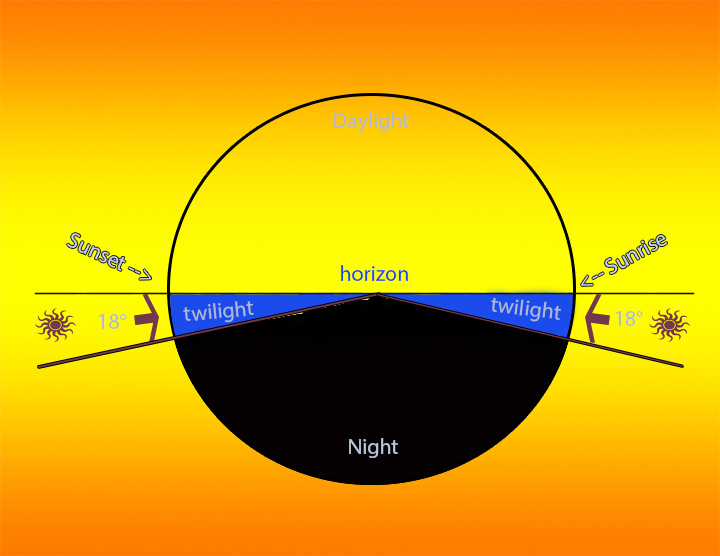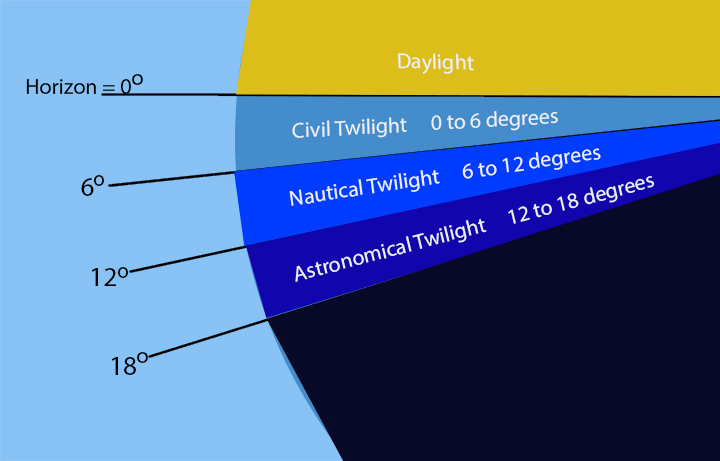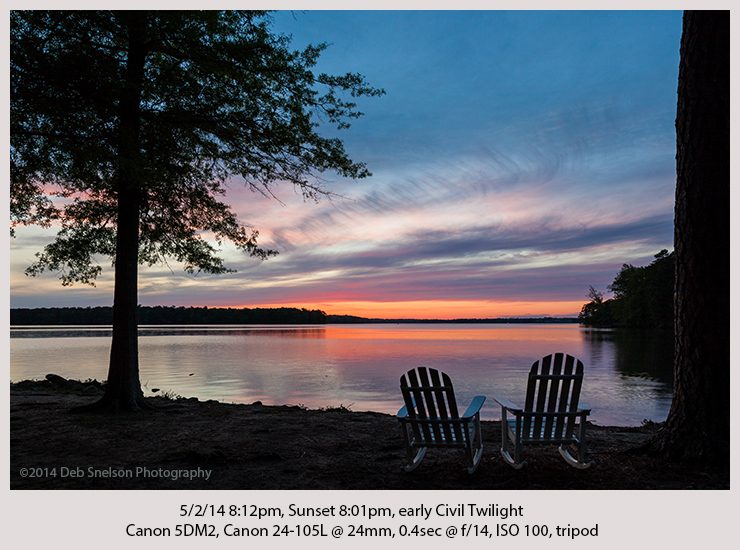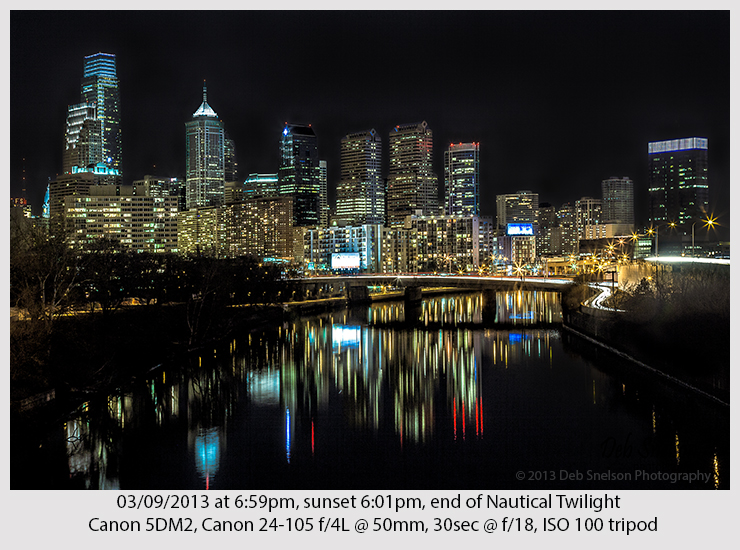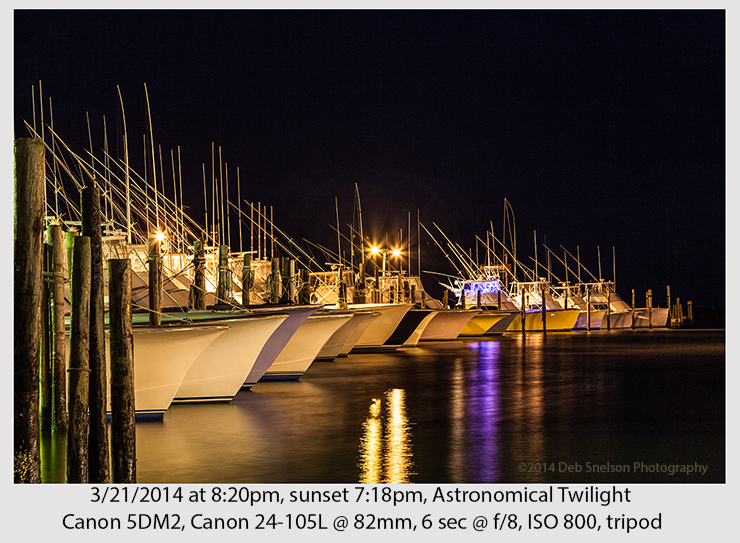The Twilight Hour
Part 1 in a series on Dawn/Dusk Photography
by Deb Snelson
www.debsnelsonphotography.com
Let’s face it, nature photographers are all about sunrises and sunsets. And for good reason – golden light, spectacular cloud plays bouncing off those first/last warm rays in a display of color, sun stars, deep saturated colors – shall I go on? But how many times do you pack it in as soon as the setting sun is completely obscured? Or arrive for a sunrise just as the sun starts to peak above the horizon? I admit, I am so tempted to join my comrades who are racing off to dinner, (or catching a few more winks in the wee hours), but I know that lingering longer, and getting up earlier, to capture the light during twilight with long exposures often yields my favorite photos. And if you get the balance of decreasing ambient light with increasing artificial light just right, you will capture the “magic” of the blue hour.
Before I describe that magic, let me start this first in a series of blog posts with the “what” – a description of the stages of twilight. Keep in mind that everything that happens from dawn to sunrise or sunset to dusk occurs the same in both cases, just in reverse order.
Twilight refers to the period of time between the beginning of dawn, technically described as when the sun is 18 degrees below the horizon, to sunrise – sun is at the horizon. Conversely, it refers to the time between sunset and the end of dusk, when the sun is 18 degrees below the horizon.
During twilight, the darkness of night transitions to daylight and vice versa. Although the sun is below the horizon and no longer directly illuminating the earth, it is continuing to illuminate the upper layers of the atmosphere and its dust. Its variations in strength depend on the angle of the solar depression. More detail will be provided in a future blog post.
The Three Stages of Twilight: (described for sunset – sunrise is in reverse order)
Civil Twilight:
Sun is between 0 and6° below the horizon and lasts approximately 30 minutes*.
There is enough available natural light for objects to be distinguishable during all of civil twilight.
Horizon is clearly defined.
The sky is bright and clouds in the west may start out red, orange and yellow while those in the east are indigo and blue. The color changes rapidly in the west from the warm tones to cool tones.
At the end of civil twilight street lights begin producing light and car headlamps are required.
Also visible is the purple or dark blue band on the horizon opposite the direction of the setting sun produced by the shadow cast by Earth on the atmosphere.
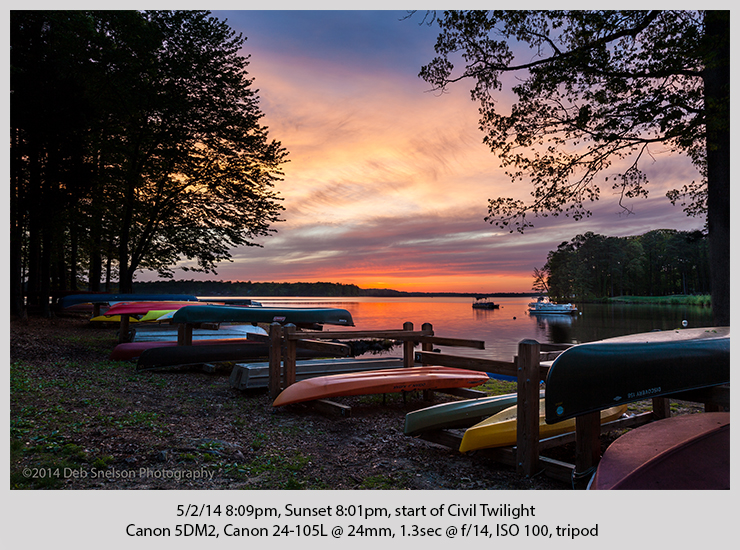
Just three minutes later, same location and date, but a different composition, you can see that the orange glow has mostly given way to the blue color of dusk.
Nautical twilight:
The solar depression angle is between 6° and 12° and lasts approximately 30 minutes*.
The sky darkens/lightens rapidly, from black to the blue of civil twilight.
At the start of dawn’s nautical twilight, edges of objects are not distinguishable without artificial light but gradually become more distinct (and vice versa for sunset).
The name “nautical” refers to the fact that at this time, navigation at sea via the horizon is impossible – the horizon is not discernible.
This period is ideal for cityscape photography.
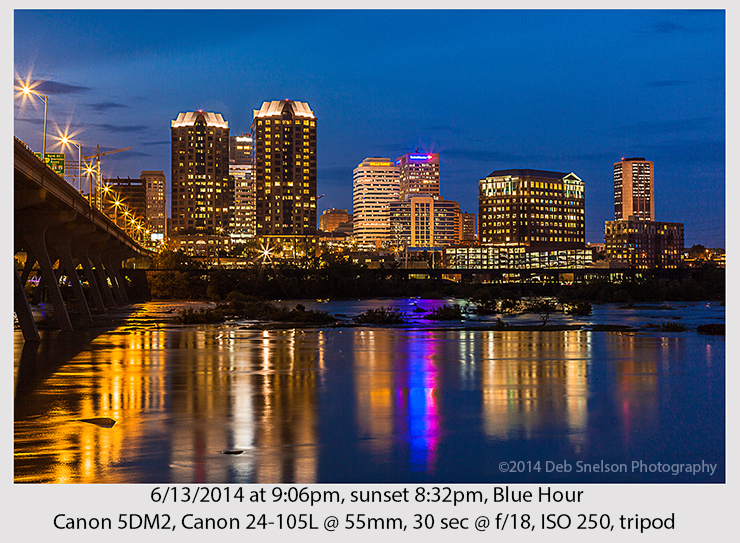
Astronomical twilight:
The solar depression angle is between 12° and 18° and lasts approximately 30 minutes.
Most people experience this time as night with a black sky, although you may be able to discern a hint of dark blue along the horizon where the sun will rise, or at the point where the sun set. Visibility of structures will depend on artificial lighting and/or the moon phase.
Skies are generally dark enough during this time to see planets, stars and other bright sources of light, dimmer objects such as nebulae and galaxies are not yet visible. Visibility of celestial objects during astronomical twilight is also dependent on factors such as light pollution, humidity, and the phase of the moon.
When the solar depression angle moves beyond 18°, the sky is at its darkest – this is Night.
The 30 minute time window given for the sun to move each 6° is an approximation suitable for Virginia, USA. But it actually varies depending on the latitude of your location. In equatorial regions the time is closer to 24 minutes, while in polar regions it may take several hours to weeks. There are also variations dependent upon equinox(faster) vs. solstice(slower).
If greater precision is needed for the time for each phase, a great resource is www.timeanddate.com. Here you can find sunrise, sunset, and start and end times for each type of twilight for any day, current, past or future. To navigate the site, hover on the “Sun & Moon” tab, click on “Sun Calculator” (first choice in the drop down menu that appears). Then just enter your location, and choose the month and year. Very useful for looking up the phase of twilight for photos shot in the past as well as a planning tool for the present and future. There are also several apps designed to provide current and future data right on your smart phone, well worth searching for these apps.
For a complete guide to twilight photography, please consider purchasing my eBook – A Comprehensive Guide to Twilight Photography. Here is the link!
